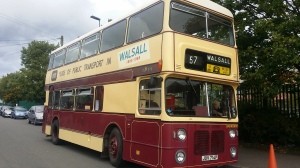I am a born and bred Brummie and I love my city very much…I often get home sick when I leave Birmingham…especially when I go on an extended trip for a couple of months. I don’t think I’ll ever leave Birmingham…but if I did the number one contender for my home would probably be Leicester.
Leicester, I think gets a bit of a bad rap, I think because the city tends to look quite dull and grey. Yes, it is a largely 1960s town and that style of architecture is not my favourite…but there are some beautiful gems in Leicester that make this a city that you really ought to visit. I was looking enough to persuade a few of German friends to take a tour of the city (on the 19th September) so I could show them some of my favourite sights. This is just a written version of the tour, however as I was tour guide I didn’t take many photos, so I might have to source them from else where.
Leicester
Leicester itself is a very old city, it was around when the Romans were in Britain where it was known as Corietauvorum. Leicester was the capital city for the tribe of Corieltauvi – who were a Celtic Iron age tribe. When the Romans withdraw from Britain, the city changed its name. It’s present name has roots back to the Anglo-Saxon Chronicle (c.914-942), where it has various spellings but they formulate around the idea of Ligoraceastre. Ceastre is an old now for a wall or fortified town – and Leicester did have medieval walls until the town eventually outgrew them. The Ligora part of the name is less clear – but could be an older name for the River Soar. The city today has a population of 330,000 making it the tenth largest city in the UK. It also is a very multicultural city and is predicted to be the first city in the UK to gain a non-white majority. This allows for a wonderful mix of cuisine and vibrancy in Leicester that helps to kick off that image that the city is grey.
Claim to fame
Leicester is probably not seen as a city famous for anything but that is quite untrue. Musicians include Family, Showaddywaddy, Cornershop and Kasabian. The city was also home to a butcher named John who also decided to start out making potato snack crisps, his surname of course was Walker. Pukka Pies, Foxes mints also originate here as well as companies like Cataphillar and a certain Thomas Cook started a business making day trips to the seaside. Joseph Merrick (the Elephant man), Gary Linekar and also the Attenborough Brothers all have connections to the city as well.
Train Station

As we took the train to Leicester it had to really be the first point of talk on the tour. The train station is very impressive, like most surviving Victorian buildings seem to be. The site itself has been a train station since 1840. Which was two years after Curzon Street Station was built in Birmingham. Due to the popularity of trains during the Victorian period more Leicester stations opened, with Leicester eventually having eight in total. The station changed it’s name twice firstly being Leicester Campbell Street (1867), then Leicester London Road (1892) finally with the Beeching Report (1963), Leicester’s train stations declined to just the one and it reverted back to just Leicester in 1969. The present building dates from 1894. Which enlarged the original train station. Recent building works in 2012 have help to modernise the station for all visitors whilst lovingly maintain traditional features.
Top Hat Terrace

If I had to pick a favourite building in Leicester, it would have to be this one. It’s relatively easy to walk past this one so it’s a good idea to keep your eyes peeled on London Road for it. The original owner is said to have been the inspiration for Athur Conan Doyle’s Sherlock Holmes and it was home to Leicester’s first private detective, Frances ‘Tanky’ Smith. Leicester was said to be a lawless place when the first police force was created in 1836. Smith joined four years later and along with follow officer Tommy Haynes, infiltrated gangs. Their reputations grew and they were soon the forces most successful officers. When James Beaumont Winstanley, the High Sherrif of Leicestershire, disappeared on a extended trip to Europe; the Winstanley hired Smith in a private capacity. Although Smith was successful in finding out what happened to Winstanley, he was sadly unable to return him alive, for he had drowned in Germany. Nevertheless, he was rewarded generously for his efforts, he came back to Leicester and employed his son James Francis Smith to design and build Victoria Terrace. However it is more popularly known as top hat terrace and the design of the building incorporates some of Smith’s famous disguises including a Bishop, a Quaker and two Jockeys.
Peace Walk, War Memorial and Victoria Park
Leicester is quite an understated city, it doesn’t boost grand buildings that make headlines like Birmingham and it hasn’t embarked on a major upgrading programme. However perhaps it’s most grandest statement and probably also one of it’s most beautiful is that of peace walk and the war memorial situated in Victoria Park. The memorial was built in 1923. Victoria Park originated as a Racecourse which operated from 1806-1883, and was built in part things to the construction of New Walk – which allowed for the development of the area that was known as South Fields, where the park is located.
University of Leicester

Right next to Victoria Park is the University of Leicester, which is famous for the discovery of Genetic Fingerprinting and the remains of Richard III. It is also home to the Stanley Burton Centre for Holocaust and Genocide Studies – the first teaching centre to open within the UK dedicated to the teaching and research of Genocide studies. The original campus building is the Fielding Johnson one, which began life as the Leicestershire and Rutland Lunatic Asylum. The building is remarkably well preserved and although the last padded cell was removed in the 1960s, it still has both exercise yards preserved which are a nice little hidden gem. During the First World War this building was used as a field hospital for wounded soldiers returning from the front. After the War the building was donated by Thomas Fielding Johnson, which is where it gets its present name from. It become the Leicestershire and Rutland University College in 1921. The University’s moto is Ut Vitam Haean, which means So that they may have life. The University was intended to be a living memorial to those who died in the First World One and remember the generation of men who were unable to gain an education before of war.
New Walk
Originally named Queen’s Walk after Queen Charlotte, George III’s wife. It was laid out in 1785 and when it was built it was more popularly known as New Walk, the name stuck and it is the name it still goes by. The walk was designed to give a suburban, non-muddy walkway within the town of Leicester. It allowed for the development of South Fields – which saw the race course built on what is now Victoria Park. During the 1960s, New Walk was scheduled to be demolished in order to make way for the Leicester Ring Road. The city’s town planner Konrad Smigielski was horrified at the thought of losing something beautiful and ordered the road to be altered to preserve New Walk. Smigielski was appointed city planner in 1961 and was the second man in the country to be appointment to such a position. He has a bit of a bad reputation in Leicestershire and he didn’t win himself any favours when he started his post – when he suggested that Leicester had very little of merit he warranted was worth saving. He placed three conversation orders of sites in Leicester, one of which was New Walk which has been preserved since 1969. The road was built but sadly during the process it destroyed much as of the remains of the Roman Forum, although Smigielski is often blamed for this loss; the Road was under construction before he entered the city planner position and it is unclear whether he could have prevented the loss of the Forum. On New Walk is also St. Stephen’s United Reform Church. This church originally stood on the site of the Train Station but in order to make way for the new station St. Stephens was carefully demolished in 1891 and relocated to New Walk, where it has remained.
New Walk Museum
The museum marked the end of my tour and we walked inside to enjoy the German Expressionist exhibit. German Expressionism was seen as Degenerate art and many of the artist within the exhibit had paintings destroyed. The paintings here were able to escape Germany and a German Expressionist exhibit first opened at the museum during the Second World War and has remained a key feature of the Museum ever since.
Leicester Cathedral and Richard III Visitor’s Centre

The Leicester Cathedral and Richard III Visitor’s Centre are located a stone’s throw from each other and the centre itself was built on the site of the 2012 discovery of the remains of Richard. It opened in 2014 and cost £4 million pounds to build.
Jewry Wall

A short walk from the cathedral is Jewry Wall, which is Britain’s tallest surviving Roman Wall. It was believed to originally be a Bath House and the origins of the name Jewry Wall are unclear.
The concluded the tour of Leicester and was a lovely day with just the right amount of History and walking. If you ever fancy going to Leicester I do recommend following this route and seeing some of the sights of Leicester. I’m sure you’ll enjoy Leicester as much as I do.
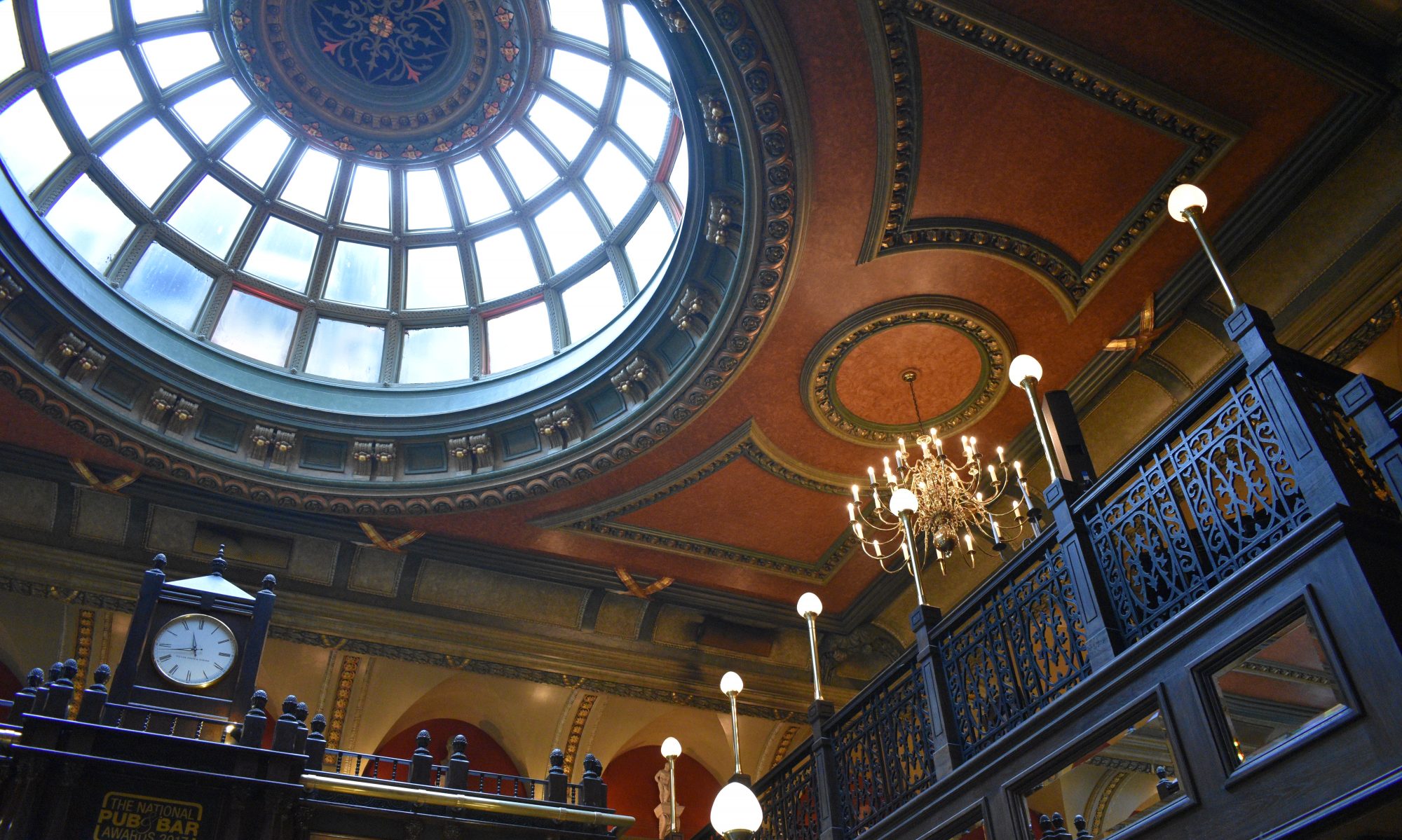














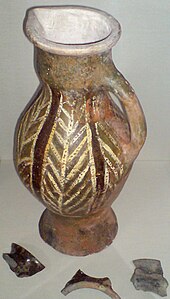




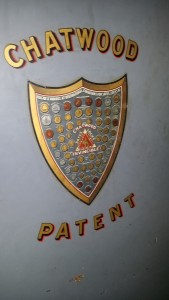

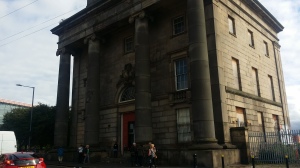

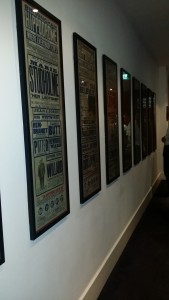
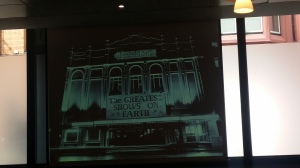
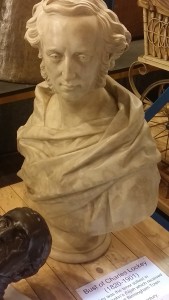
 This was around about 2 O’Clock and having started at 10 O’Clock, a large part of the group decided to call it a day. A few hard corers stayed on a braced themselves for a 30 minute walk across town to go to the Museum Collections building. The Museum Collections building is like a big warehouse that houses the artefacts the museum has
This was around about 2 O’Clock and having started at 10 O’Clock, a large part of the group decided to call it a day. A few hard corers stayed on a braced themselves for a 30 minute walk across town to go to the Museum Collections building. The Museum Collections building is like a big warehouse that houses the artefacts the museum has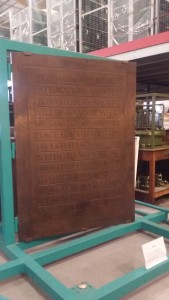 question I have often wondered. I look around and see some beautiful sculptures and busts of people and sometimes during refurbishments these disappear and never come back. I often wondered where they go and if they are destroyed. Turns out a lot of them are stored in the Museum Collections and they have a fantastic collection of random things. It was great looking through them. Although it was nearing the end of the event and the building was getting ready to close, so it was rather a rushed look through.
question I have often wondered. I look around and see some beautiful sculptures and busts of people and sometimes during refurbishments these disappear and never come back. I often wondered where they go and if they are destroyed. Turns out a lot of them are stored in the Museum Collections and they have a fantastic collection of random things. It was great looking through them. Although it was nearing the end of the event and the building was getting ready to close, so it was rather a rushed look through.
